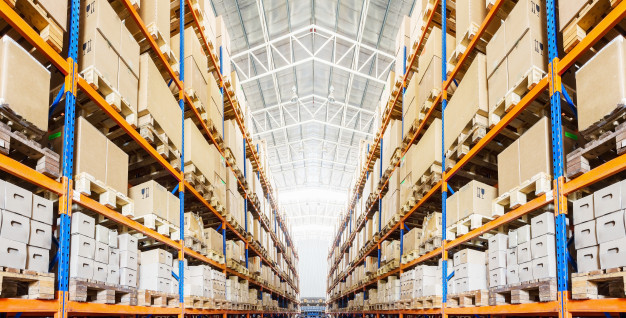
An inventory process faces most of its errors while it starts receiving. If there’s an error at the receiving end, the effect of it can be 10 times more on the rest of the warehouse process
When it comes to warehouse optimization, usually the expert would advise optimizing, receiving in the first place, before optimizing the warehouse
There are many websites that diminish the size and the importance of receiving at a great detriment to their entire operation. There are too many activities that receiving does. Like adding labels, counting the items, and reconcile them with the manufacturer’s packing list. They also accommodate backorders, reporting manufacturer shipping errors. These activities need to be optimized and supported. By focusing on reducing receiving errors and inefficiencies, you will improve the flow of your entire warehouse.
Let’s look at some of the most important tips that can help you to optimize your warehouse at the starting point are:
1.The entire process of warehouse optimization starts with an efficient layout: Some of the basic questions that arise are, ”Where is your picking operation located with respect to shipping and product storage? Is your floor space cluttered and aisleways clogged? Are parts located far from your assembly operation? These questions are indicators that signal the need to develop a floor plan, that combines complementary operations along with storage, that meets needs now and provides room for growth.
2.Reduce travel time by storing the most frequently picked items inaccessible location: As a warehouse supervisor, the overall time it takes to for raw materials or parts to make their way through the warehouse and onto store shelves is another key metric in determines your success.
Proactive managers can also reduce travel time by stocking important parts in the most accessible locations.

3.Setting up the quality control area close as possible to the parking area: In the order preparation process, the quality control department is the most important phase. It is an important phase of the order preparation process.
4. Reclaim your floor space using the 5S method: sort, set in order, shine, standardize and systematize. If your warehouse has been in operation for many years, ‘stuff’ has a way of accumulating in places that should be used for valuable inventory and stock
5.Strive for 85% occupancy to avoid congestion: A distribution centre is technically out of space when it hits about 85% of its occupancy. That’s not just in the storage area; it holds true for receiving, shipping, and all other process areas.
6.Ensure that bin and container space is consistent with the items being stored. One area that is often overlooked when warehouse space is not an issue, is to ensure that the warehouse space is consistent with the items to be stored.
7. Another area that can maximize space utilization is to use containers in the warehouse that fits the item that is being stored: Quite often, a part is not packaged and will need to be placed in a storage container before it is stored on the racks. Many warehouses do not have various sizes of these storage containers and adopt a “one size fits all” approach. This means that a replacement valve for a pump can be placed in the same size container as a few yards of PVC piping.
Some Benefits of warehouse optimization
The two most important processes of optimization in the warehouse are process automation and physical automation. The prior refers to the automation of manual processes such as data collection for inventory purposes, physical automation refers to the use of tools such as drones and robots to assist in the movement of goods.
Some of the benefits of optimizing the warehouse also lead to better profit like:
1.Proper matching of labour workload: It refers to a defined organizational structure where employees are working to their potential minimizes work fatigue and the need to pay overtime in times of high workload.
2: Better planning and forecasting: Planing and forecasting your inventory demand allows warehouses to better plan for the future. Having this data makes it much easier to allocate resources without having to incur extra costs.
3. More return to the customer: Providing timely delivery is one of the deciding factors when it comes to repeat business. Optimizing a warehouse creates conditions in which high-demand items in-demand are always stocked, leading to timely order fulfilment.
Understanding some of the important tips on how to make our warehouse system smooth at the receiving point, directly helps in making the entire inventory management process efficient.
 Start using ZapInventory today
Start using ZapInventory today
